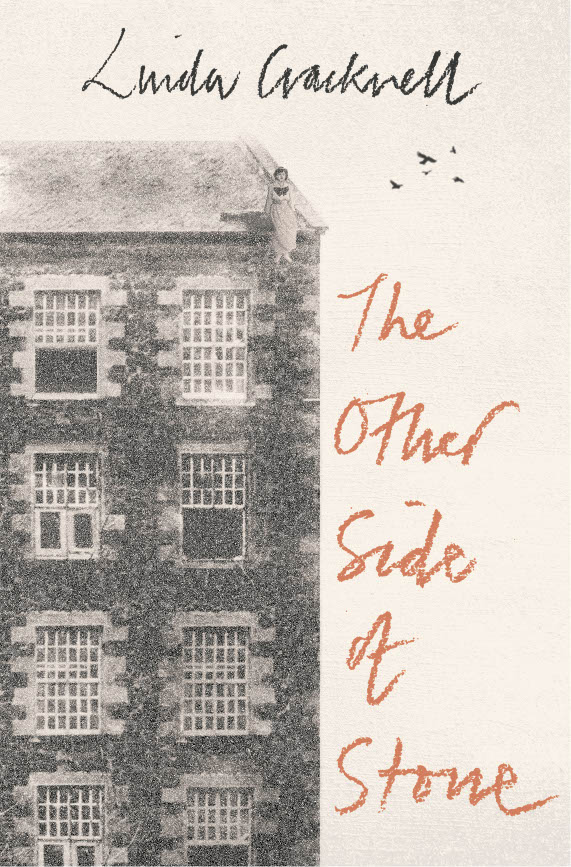Newly published by Taproot Press, Linda Cracknell’s ‘The Other Side of Stone’ spans three centuries in an intimate study of those connected to a Perthshire woollen mill. The story is a deft weaving-together of folklore, feminism and industry, writes Anna Fleming.

Linda Cracknell’s novella The Other Side of Stone explores the legacy of a mysterious curse attached to a tweed mill in rural Perthshire. The book opens in 1831, with a stonemason carving the dedication stone for the new mill building. While he works, he grows concerned about a glaistig –a wandering spirit – troubling a local family. This ghostly woman is an ambiguous figure from Scottish folklore. In some stories she is a benevolent presence, caring for cattle and children; in others she is a mischievous trickster. Sometimes, displaced and vengeful, she takes on a more sinister role. Fearing the glaistig’s power, the stonemason takes action.
I look at the patient rock that waits with its face up, the year I’ve marked on it like a flea-bite in its story. I dust off the surface, and see that it is fine, that the light will catch it almost as from a plate of silver. And on the top bed, where it will be hidden, I make my mark.
Secretly carving her figure onto the reverse of the dedication stone, he ties her to the mill and, as the novella unfolds, we sense the impact of this deed across two centuries.
In this work of Scottish magic-realism, each chapter centres on a different character, giving us multiple perspectives on the mill through time. Following the stonemason, we meet a suffragette in 1913, a weaver from 1990, flat developers in 2006 and a group visiting the site in 2019. Each character is well-drawn, offering their own compelling short story that finds its place within the wider piece.
Patterns emerge. Men are strangely drawn to the mill and seem lost without it. ‘Are you trying to make yourself a martyr to the place?’ a wife asks her husband, the weaver, who is determined to make one last tweed. The men’s compulsion to work can be linked to the glaistig, and yet the novella keeps things open, hovering in the ambiguous space of folklore. Strands of well-researched social and industrial history are deftly woven in – for example through references to trade unionism – and thus the men’s laboured frenzies also speak of the insatiable drive in the nineteenth and twentieth centuries to fuel the fires of industrial capitalism.
The mill consumes the male characters; but the women stand back and through this gendered division, the novella plots an intriguing journey through the changing landscape of women’s rights. Drawing from historical sources, Cracknell creates a captivating central character in the suffragette whose story runs through the book, recounting a year of agitation, frustration and action.
“Suffragette. Suffering yet?”
I can be strong. Breathe, breathe, chin up. Like Miss Parker with her grace under fire, aye.
Raging against convention and the restrictions of village life, the suffragette’s impassioned voice drives the narrative forwards, to its final resolution, which offers a nuanced view on women’s power and freedom.
In beautiful prose passages, Cracknell captures the handiwork of many generations based around a rural mill.
My John showed me the vanishing cloth at home once, the tweeds you make in there for the estates. I can barely see a stitch in them. Its like they’re hewn rather than woven, or grown like heather.
The Other Side of Stone weaves together many strands, combining folklore, feminism and industry, to tell a number of moving stories. Ultimately, the mysterious feminine power that haunts the building leaves lingering questions. Closing this provocative little book, I am left musing on the nature and foundation of present day freedoms.
*
‘The Other Side of Stone’ is out now and available here (£14.99).